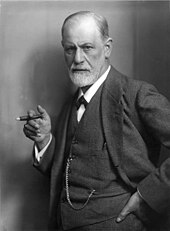Conversion therapy is the pseudoscientific practice of attempting to change an individual's sexual orientation, gender identity, or gender expression to align with heterosexual and cisgender norms. Methods that have been used to this end include forms of brain surgery, surgical or hormonal castration, aversive treatments such as electric shocks, nausea-inducing drugs, hypnosis, counseling, spiritual interventions, visualization, psychoanalysis, and arousal reconditioning.

Sexology is the scientific study of human sexuality, including human sexual interests, behaviors, and functions. The term sexology does not generally refer to the non-scientific study of sexuality, such as social criticism.

Sexual orientation is an enduring personal pattern of romantic attraction or sexual attraction to persons of the opposite sex or gender, the same sex or gender, or to both sexes or more than one gender. Patterns are generally categorized under heterosexuality, homosexuality, and bisexuality, while asexuality is sometimes identified as the fourth category.

The Kinsey scale, also called the Heterosexual–Homosexual Rating Scale, is used in research to describe a person's sexual orientation based on one's experience or response at a given time. The scale typically ranges from 0, meaning exclusively heterosexual, to a 6, meaning exclusively homosexual. In both the male and female volumes of the Kinsey Reports, an additional grade, listed as "X", indicated "no socio-sexual contacts or reactions" (asexuality). The reports were first published in Sexual Behavior in the Human Male (1948) by Alfred Kinsey, Wardell Pomeroy, and others, and were also prominent in the complementary work Sexual Behavior in the Human Female (1953).

The field of psychology has extensively studied homosexuality as a human sexual orientation. The American Psychiatric Association listed homosexuality in the DSM-I in 1952 as a "sociopathic personality disturbance," but that classification came under scrutiny in research funded by the National Institute of Mental Health. That research and subsequent studies consistently failed to produce any empirical or scientific basis for regarding homosexuality as anything other than a natural and normal sexual orientation that is a healthy and positive expression of human sexuality. As a result of this scientific research, the American Psychiatric Association removed homosexuality from the DSM-II in 1973. Upon a thorough review of the scientific data, the American Psychological Association followed in 1975 and also called on all mental health professionals to take the lead in "removing the stigma of mental illness that has long been associated" with homosexuality. In 1993, the National Association of Social Workers adopted the same position as the American Psychiatric Association and the American Psychological Association, in recognition of scientific evidence. The World Health Organization, which listed homosexuality in the ICD-9 in 1977, removed homosexuality from the ICD-10 which was endorsed by the 43rd World Health Assembly on 17 May 1990.

Latent homosexuality is an erotic attraction toward members of the same sex that is not consciously experienced or expressed in overt action. This may mean a hidden inclination or potential for interest in homosexual relationships, which is either suppressed or not recognized, and which has not yet been explored, or may never be explored.

Non-heterosexual is a word for a sexual orientation or sexual identity that is not heterosexual. The term helps define the "concept of what is the norm and how a particular group is different from that norm". Non-heterosexual is used in feminist and gender studies fields as well as general academic literature to help differentiate between sexual identities chosen, prescribed and simply assumed, with varying understanding of implications of those sexual identities. The term is similar to queer, though less politically charged and more clinical; queer generally refers to being non-normative and non-heterosexual. Some view the term as being contentious and pejorative as it "labels people against the perceived norm of heterosexuality, thus reinforcing heteronormativity". Still, others say non-heterosexual is the only term useful to maintaining coherence in research and suggest it "highlights a shortcoming in our language around sexual identity"; for instance, its use can enable bisexual erasure.

Homoeroticism is sexual attraction between members of the same sex, including both male–male and female–female attraction. The concept differs from the concept of homosexuality: it refers specifically to the desire itself, which can be temporary, whereas "homosexuality" implies a more permanent state of identity or sexual orientation. It has been depicted or manifested throughout the history of the visual arts and literature and can also be found in performative forms; from theatre to the theatricality of uniformed movements. According to the Oxford English Dictionary, it is "pertaining to or characterized by a tendency for erotic emotions to be centered on a person of the same sex; or pertaining to a homo-erotic person."
Wilhelm Stekel was an Austrian physician and psychologist, who became one of Sigmund Freud's earliest followers, and was once described as "Freud's most distinguished pupil". According to Ernest Jones, "Stekel may be accorded the honour, together with Freud, of having founded the first psycho-analytic society". However, a phrase used by Freud in a letter to Stekel, "the Psychological Society founded by you", suggests that the initiative was entirely Stekel's. Jones also wrote of Stekel that he was "a naturally gifted psychologist with an unusual flair for detecting repressed material". Freud and Stekel later had a falling-out, with Freud announcing in November 1912 that "Stekel is going his own way". A letter from Freud to Stekel dated January 1924 indicates that the falling out was on interpersonal rather than theoretical grounds, and that at some point Freud developed a low opinion of his former associate. He wrote: "I...contradict your often repeated assertion that you were rejected by me on account of scientific differences. This sounds quite good in public but it doesn't correspond with the truth. It was exclusively your personal qualities—usually described as character and behavior—which made collaboration with you impossible for my friends and myself." Stekel's works are translated and published in many languages.
Isidor Isaak Sadger, born in Neu Sandez, Galicia, was a forensic medical doctor and psychoanalyst in Vienna. A leader in the early development of psychoanalysis, he began his career as a neurological specialist and, in 1894, began publishing a series of articles on psychophysiology. He studied with Sigmund Freud from 1895 to 1904 with a concentration in homosexuality and fetishism and coined the term Sadomasochismus (sadomasochism) in 1913. He also coined the term "Narcissmus" (narcissism). In September 1942, he was deported to the Theresienstadt concentration camp, where he died.

Androphilia and gynephilia are terms used in behavioral science to describe sexual orientation, as an alternative to a gender binary homosexual and heterosexual conceptualization. Androphilia describes sexual attraction to men and/or masculinity; gynephilia describes the sexual attraction to women and/or femininity. Ambiphilia describes the combination of both androphilia and gynephilia in a given individual, or bisexuality.
Albert Moll was a neurologist, psychologist, sexologist, and ethicist. Alongside Iwan Bloch and Magnus Hirschfeld, he is considered the founder of medical psychology and sexology. Although Moll was a pioneer of sexology, his contemporaries such as Magnus Hirschfeld and Sigmund Freud eclipsed his work, primarily due to the bitter rivalry between them. Moll accused Freud of selection bias, and Freud claimed Moll could not handle constructive criticism after their first meeting.

Bisexual erasure, also called bisexual invisibility, is the tendency to ignore, remove, falsify, or re-explain evidence of bisexuality in history, academia, the news media, and other primary sources.

The questioning of one's sexual orientation, sexual identity, gender, or all three is a process of exploration by people who may be unsure, still exploring, or concerned about applying a social label to themselves for various reasons. The letter "Q" is sometimes added to the end of the acronym LGBT ; the "Q" can refer to either queer or questioning.

In classical psychoanalytic theory, the Oedipus complex refers to a son's sexual attitude towards his mother and concomitant hostility toward his father, first formed during the phallic stage of psychosexual development. A daughter's attitude of desire for her father and hostility toward her mother is referred to as the feminine Oedipus complex. The general concept was considered by Sigmund Freud in The Interpretation of Dreams (1899), although the term itself was introduced in his paper A Special Type of Choice of Object made by Men (1910).

Bisexuality is a romantic or sexual attraction or behavior toward both males and females, to more than one gender, or to both people of the same gender and different genders. It may also be defined to include romantic or sexual attraction to people regardless of their sex or gender identity, which is also known as pansexuality.
Sexual fluidity is one or more changes in sexuality or sexual identity. Sexual orientation is stable for the vast majority of people, but some research indicates that some people may experience change in their sexual orientation, and this is slightly more likely for women than for men. There is no scientific evidence that sexual orientation can be changed through psychotherapy. Sexual identity can change throughout an individual's life, and does not have to align with biological sex, sexual behavior, or actual sexual orientation.
This is a list of writings published by Sigmund Freud. Books are either linked or in italics.
Homosexuality: Disease or Way of Life? is a 1956 book by the psychoanalyst Edmund Bergler, in which the author argues that homosexuality is a curable illness. Bergler denies that homosexuality is caused by hormonal or other biological factors, the Oedipus complex, or having a dominant mother and a weak or absent father, instead attributing both male and female homosexuality to pre-Oedipal factors involving an unsolved masochistic conflict with the mother during the earliest period of infancy. According to Bergler, homosexuality in men reflects unconscious fear and hatred of women. Bergler argues that there are several different types of homosexuality, each with a distinct clinical profile. Bergler rejects the existence of bisexuality, maintaining that all supposed bisexuals are homosexuals, and criticizes the work of sex researcher Alfred Kinsey. He characterizes homosexual men as sexually promiscuous, and argues that this promiscuity is a result of their unsatisfying sex lives and masochistic craving for danger. Bergler argues against immediately repealing laws against homosexuality, though he suggests that such laws could perhaps be repealed in the future if other measures against homosexuality proved effective. Bergler proposes the publicizing of his ideas as a measure against homosexuality.
The history of conversion therapy can be divided broadly into three periods: an early Freudian period; a period of mainstream approval of conversion therapy, when the mental health establishment became the "primary superintendent" of sexuality; and a post-Stonewall period where the mainstream medical profession disavowed conversion therapy.





